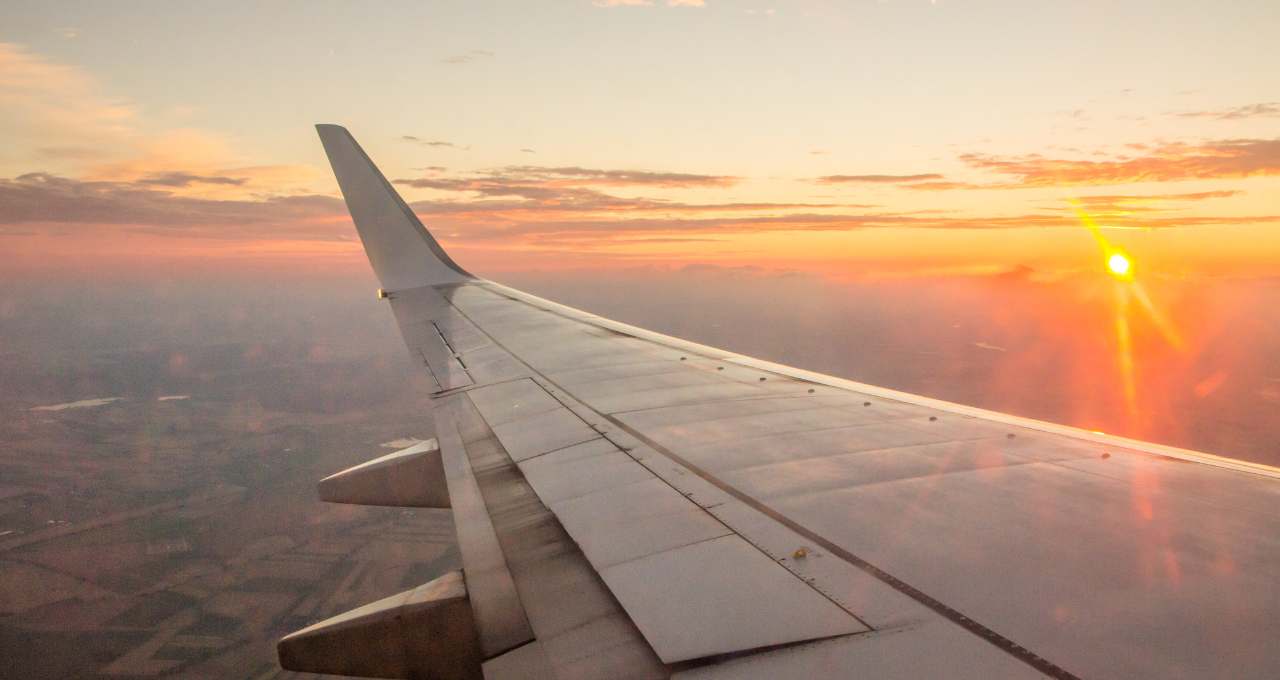
Dollar and oil are the two biggest weights in the Brazilian aviation sector, experts say (Image: Getty Images/Canva Pro)
To say that the air sector Brazilians are experiencing a “turbulent” moment, it’s a tempting pun when, from the end of 2023 until mid-September of this year, the two big national names present on the Stock Exchange, Gol (GOLL4) e Azul (AZUL4), accumulate drops of approximately 85% and 60%, respectively, according to a survey by Elos Ayta carried out at the request of Money Times.
In this scenario, Gol faces a Chapter 11 — judicial recovery in the United States —, while Azul struggles to dispel market concerns that it will follow the same path.
In recent weeks, Azul has even been among the highlights of the Ibovespa (IBOV) — oscillating between the positive and negative side, in reaction to announcements, news and clarifications about its restructuring process.
It is interesting to note that, according to the Elos Ayta survey, there is a discrepancy between the airlines listed on the Brazilian Stock Exchange compared to Latam Airlines (LTM), which operates in Brazil, but with shares traded on the Chilean Stock Exchange, where it has accumulated a rise of 91.85% since December 31, 2022 until September 5, 2024. In the United States, Delta (DAL) e United (UAL) advance almost 30% and 20% on the NYSE in the same period, while the American Airlines (AAL) racked up losses of 15% on the Nasdaq.
According to Enrico Cozzolino, director of analysis at Levante, the oil It is one of the main challenges for the sector, which is suffering from the impact on the price of aviation kerosene, which increases fuel costs in airlines' balance sheets.
The analyst comments that, in Brazil, around 40% of airline revenue is used to cover fuel costs, compared to around 20% for North American companies.
In the case of Brazil, there is also an extra factor combined with this: the devaluation of the real.
Exchange rate fluctuations make aircraft leasing more expensive, in addition to fuel and other dollarized costs. So far this year, the dollar has accumulated a 12% increase against the real.
The account of expenses in dollars and revenue in reais has been difficult to balance in the quarterly balance sheets of Brazilian airlines, which have only reported losses in recent quarters.
Cozzolino considers that the problem of the two big names present in the Ibovespa, Gol and Azul, is not in their management and operation, but rather in the impact of macro factors, with the situations that impact oil e dollar.
As if the weight of the currency and the commodity were not enough, the Levante analyst adds that high interest rates and the remnants of the post-pandemic period still weigh on performance, given that the basic interest rate (Selic) is on track to end the year at a level of 11.25%, according to the Focus Bulletin, above the 9% expected at the beginning of 2024. “This while demand for air tickets is still struggling to return to pre-pandemic levels,” adds Cozzolino.
In a seemingly endless list of aspects that put pressure on margins, there is also sensitivity to variables such as logistical problems, airport structure and even overlapping routes.
On the US airlines side, the aviation sector scenario continues to have intrinsic aspects, such as tight margins. However, the impact of dollarized expenses and costs is not as much of a problem as it is for Brazil.
Behind the dollar and oil
Marcus Quintella, director of FGV Transportes, adds that the sector is already naturally very volatile and has small profit margins. In this sense, he reinforces that, worldwide, the operational costs involved in the sector are the first point to be considered, with emphasis on fuel.
However, in Brazil the impact is even greater. Quintella comments that today, aviation kerosene in Brazil represents up to 40% of the cost of airfare, while in the United States and Europe the proportion is around 23%.
He also points out that operating costs are impacted by heavy taxation, which sets the Brazilian aviation sector apart from other countries, such as the United States.
In Quintella's assessment, other factors, in addition to exchange rate fluctuations and oil, are included in the quarterly calculations of the Brazilian aviation sector, such as the complex labor aspect, economic and political instability, legal uncertainty, regulation and risk pricing.
On the international scene, US airlines suffer more from the geopolitical context, such as wars, in addition to climate issues that interfere with flights.
“The sector here in Brazil, and throughout the world, is highly dollarized. The high exchange rate has a strong impact, because around 60% of airfare costs are dollarized. In addition to QAV, there is aircraft leasing, rental and other costs, such as lubricants, and sometimes some labor. So, in other words, there is a form of dollarization.”
Is there room for other airlines to enter Brazil?
In a scenario of high interest rates, complex tax burden and regulations, high judicialization, strong impact of exchange rate variations and political interference in pricing policy, what are the attractions for airlines to enter Brazil?
This was the reflection raised by Quintella, who highlights the existence of demand, given the dominance of the Brazilian market by a few airlines. However, the attractiveness of a naturally challenging sector, amid circumstances that increase the challenge, makes it difficult for new names to enter.
“It scares investors and makes it difficult for airlines to enter the market. There is bureaucracy, the need for licenses, and the regulations are difficult to understand because they fluctuate,” says the director of FGV Transportes.
Blue sky on the horizon for airlines, but caution is needed
Enrico Cozzolino sees a blue sky on the horizon, assessing that the screen price does not actually reflect the fundamentals and potential for appreciation for both Gol and Azul.
He positively assesses the management of the companies and considers that passenger revenue per kilometer has been improving. As triggers for further improvement, controlled inflation and the prospect of interest rate cuts are improving the current scenario.
The analyst, however, criticizes the companies' communication, especially Azul, assessing that greater transparency in the disclosure of information about debt negotiations would be positive, avoiding noise.
Cozzolino concludes with a cautionary statement. “Investors need to be very cautious. Just because prices can rise 100%, if we look at the fundamentals, doesn’t mean they’re going to disregard the risk involved in this rise.”
Azul and the increase of 54.2% in three days
When talking about airlines, it is impossible to ignore Azul's current situation, which has been presenting outstanding moments on the Stock Exchange, trading session after trading session.
A survey by Elos Ayta shows that AZUL4 registered an appreciation of 54.2% between the trading sessions of September 12 and 17, after reaching its lowest historical price. In the period, this was the best performance among the shares that make up the Ibovespa.
The company's market value rose to R$2.16 billion at the close of trading on September 17, an increase of R$761 million compared to the value recorded on September 12, the survey shows.
Despite the recovery seen in recent days, AZUL4 remains 90% below its historical peak on January 28, 2020, when it reached R$62.41. Still, in the year to date, the shares have fallen 64.9%.
It is worth remembering that, in recent weeks, the airline's shares have reacted to news about the company's debts and negotiations with lessors.
On Monday (16), Azul confirmed that it is in negotiations with aircraft lessors to optimize the capital structure agreed in the capital optimization plan signed last year.
Among the terms being discussed is a replacement of the US$580 million debt with equity in the airline. In response, shares soared 15% on the day.
